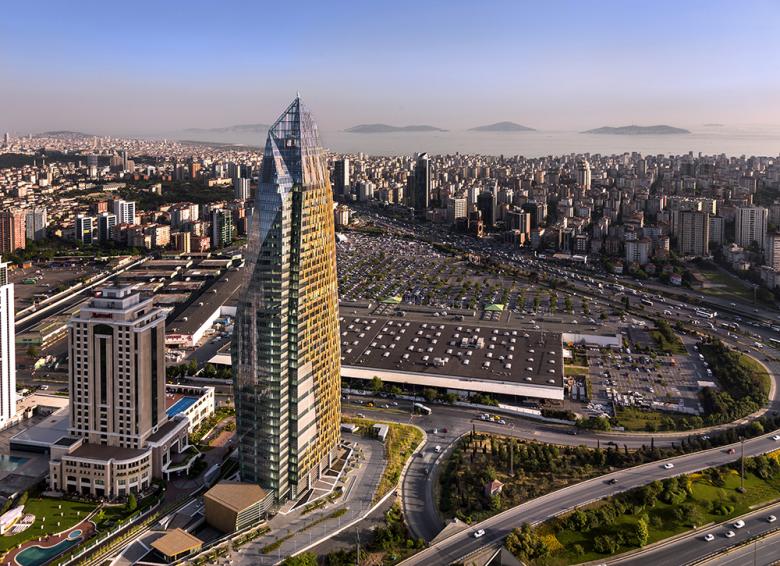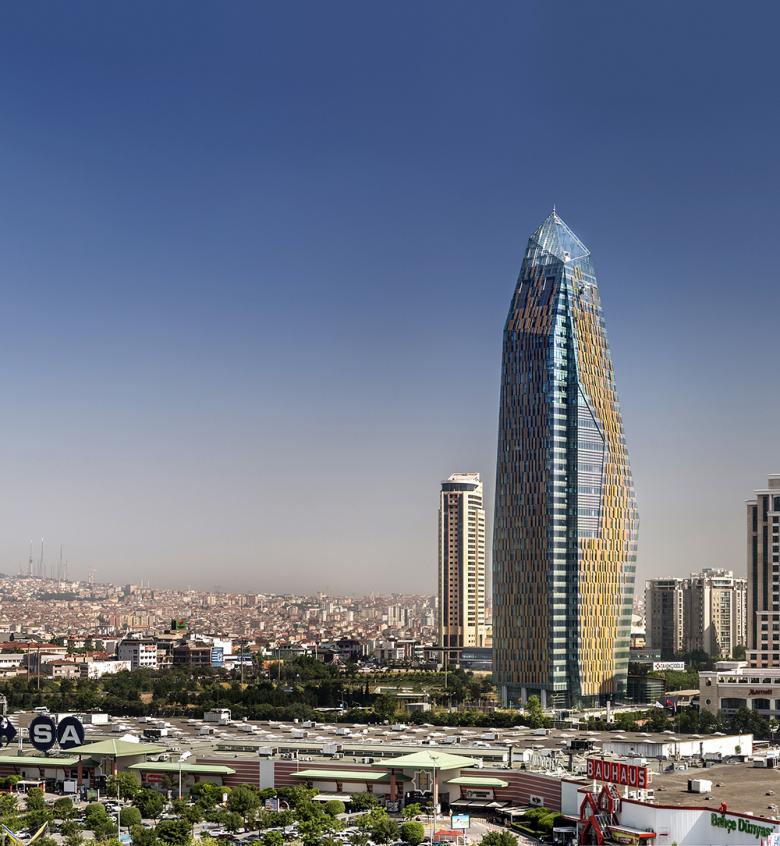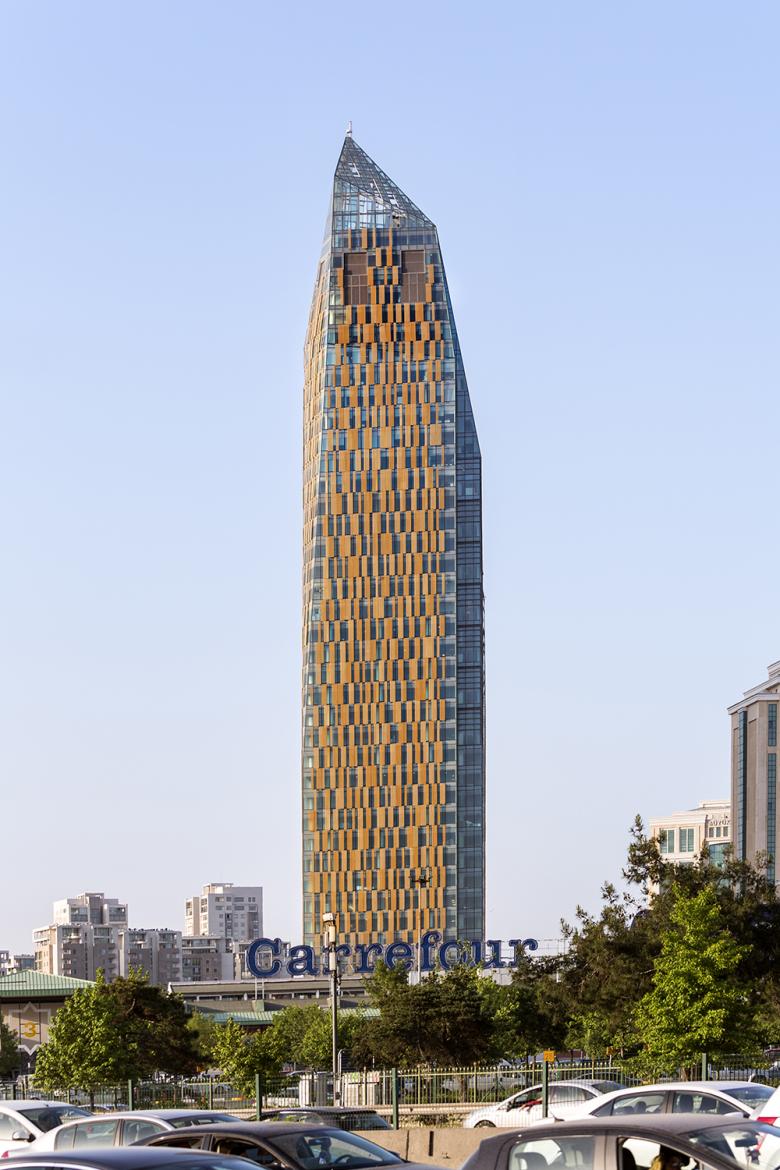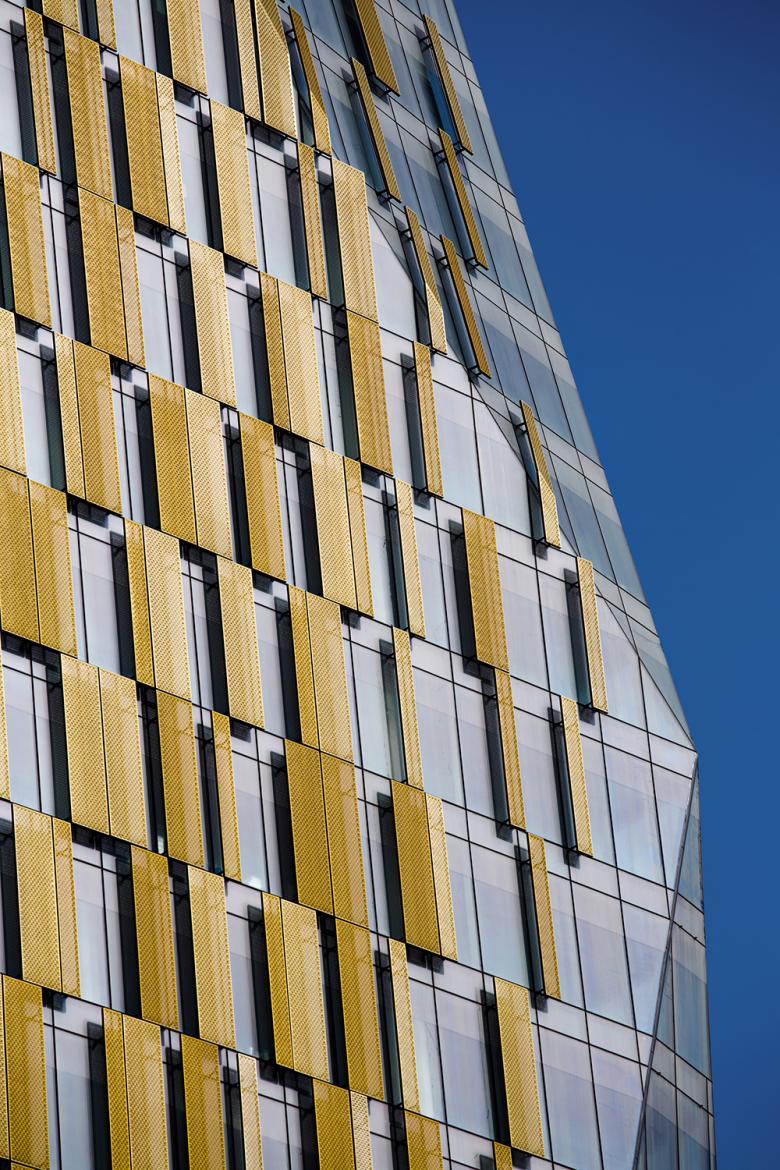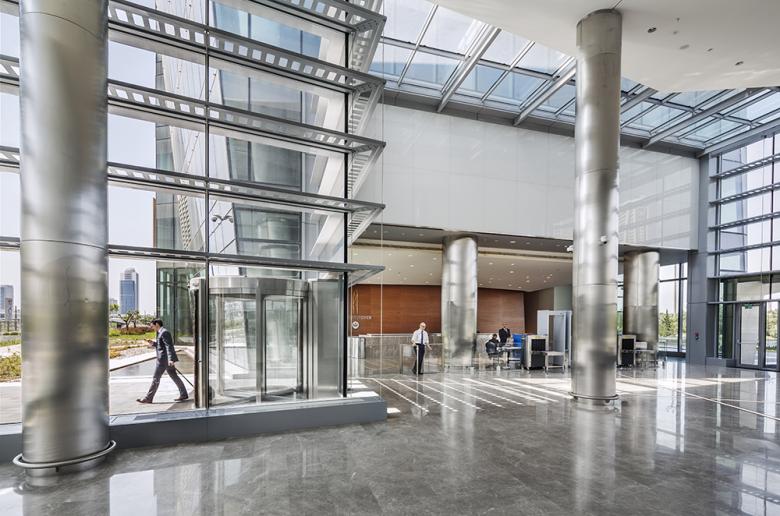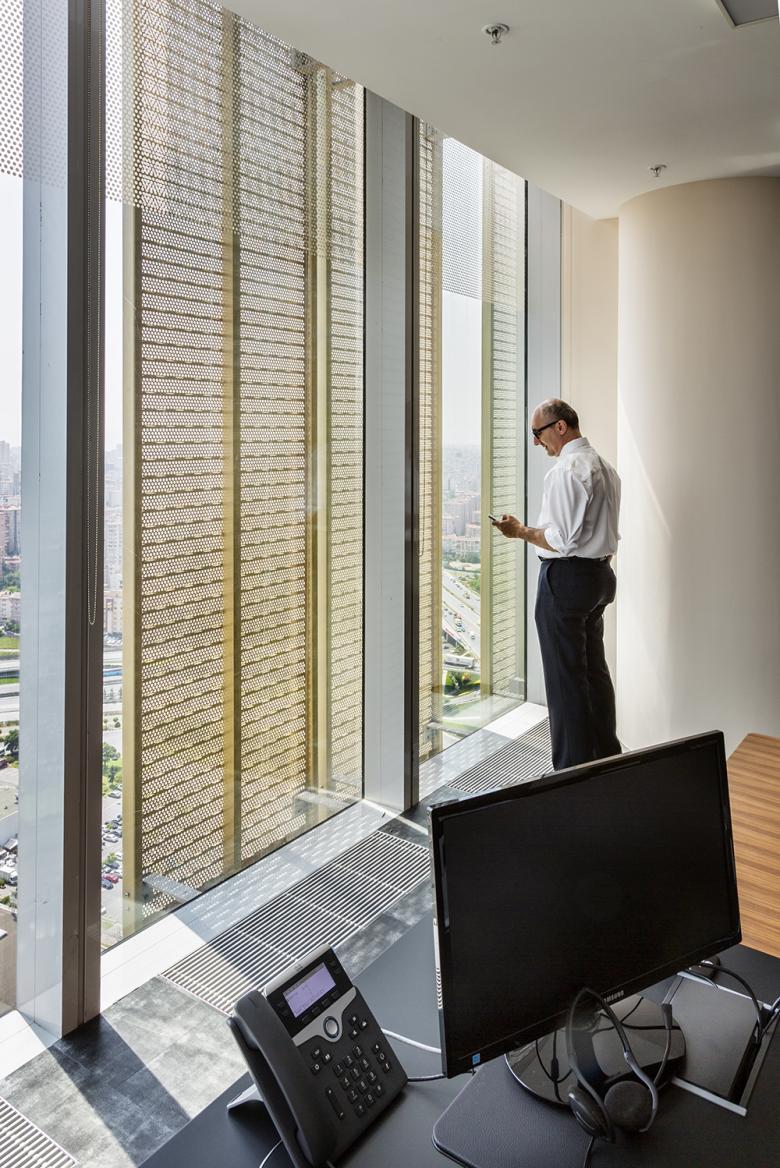Allianz Tower
28. septembre 2015
Designing buildings for a foreign country involves a good deal of research and interpretation, so additions to the context incorporate contemporary methods but are also sensitive to traditions. These considerations are evident in the tower New York-based architecture firm FXFOWLE designed for a site at the eastern entrance to Istanbul; it is a high-performance tower that reflects its unique locale. The architects sent us some text and images on the Allianz Tower completed last year.
Typically defined as a bridge between East and West, Istanbul’s condition is more accurately described as the pivot point between four regions. In addition to the above noted Europe (west) and Asia (east), it is equally a link between the Slavic world (north) and Arab world (south). As the surrounding regions—along with Turkey itself - have evolved in the post-Cold War period, Istanbul has reemerged as a true crossroads of trade, capital, and ideas. With Istanbul’s population fast approaching 15 million, there is pressure on the city’s aging and non-seismic-resistant building stock. Coupled with a young population (the average age is 29) and a generally vibrant economy, the overall conditions have been ripe for high-rise development.
Istanbul’s rich and layered past is a backdrop to this growth and renewal. It is an ancient city that has served as the capitol of the Roman, Byzantine, and Ottoman Empires. The city’s planning, monuments, and architecture reflect these periods. The late modern architecture in Turkey typically generated monotonous, systemized buildings, much of their form predetermined by highly restrictive codes. Adding to the mix and contributing greatly to its sense of place, is Istanbul’s natural environment: the landscape, the Bosporus and the Marmara Sea.
Out of this milieu was born Allianz Tower. A new 42-story office tower marking the eastern entrance to the city, it was intended to be a singular, headquarters quality, high performance tower; simultaneously world-class and reflecting its unique locale.
Istanbul’s Allianz Tower draws its design from a cultural reading of place. The region offers a limitless territory of ornament and expression. The designers looked beyond superficial analysis of this fertile domain to the realm of deeper interpretation. The office tower brings together sculptural massing, which is rooted in place and landscape; a solar-responsive skin, which alludes to Islamic tradition; and numerous green spaces. Like Istanbul itself, the building is culturally specific yet internationally resonant; it operates locally and also within a larger field of worldwide architectural concerns.
Istanbul is divided by the Bosporus, a narrow strait. The Old City is situated on the western, European side; Allianz Tower is on the Asian side, ten kilometers to the east, at the intersection of two major highways. It’s the first tall building that visitors to the city encounter from the east en route from Sabiha Gökçen Airport to the city center. This condition as a regional marker influenced the tower’s “obelisk” form.
Early in the design process, design strategies were sought to anchor the massing into both cultural and solar contexts, while addressing more normative functional and regulatory issues. The unique geographic and historic landscape of Cappadocia in Central Turkey—tower-like habitations emerging from rock formations—were an influential reference in the sculpting of the form, as was the more general reference to Islamic geometric ornamentation. Working within the sky-exposure planes generated by the irregular site also proved formative; maximizing the usable area of the upper floors as the planes converged was especially challenging. Rotating the building on the site by approximately thirty-three degrees increased the floor plate size by 10%, improved the core-to wall dimensions, and reduced the height of the building by 4 floors, all making the building more efficient. It had the added benefit of modestly reducing the solar isolation (2%). All these influences—cultural, sustainable, and functional—were integrated into the basic chiseled figure of the tower.
It is useful to highlight the role of insolation modeling during the early design phases. Office buildings in this climate are generally “cooling dominant”; they use more air-conditioning due to the size of the floors and the intensity of people, lights, and equipment within. There is also the desire for large expanses of glass for enhanced occupant experience. This adds up to an imperative to increase passive shading of the building’s skin, preventing solar energy from hitting and penetrating the glazing. Using SEFAIRA and Ecotect modeling software, the design team iteratively tested various orientations and massings. As noted above, the massing was rotated in part to optimize solar response.
Beyond the rotation of the building, a more robust passive shading regime was needed in order to achieve the conflicting desires of transparency through ample glazing (approximately 80%) and ambitious energy reduction goals. Islamic vernacular architecture was a departure point for resolving this contradiction. Geometrically ornamented Islamic mashrabiya screens both temper direct sunlight and limit views from the street into residences. The designers sought to replicate the qualities of the mashrabiya on the building skin. The solution, a stippled golden scrim that drapes over the glass surface of the building, incorporates ornament-like patterning, is tuned to the solar orientation, and reduces heat load. Among the wide-ranging sources for the sunscreen were the sensibilities of the “exotic Orient,” where gold and bronze are metals of sophistication; the innovative garments of Paco Rabanne; and the cloak in Klimt’s iconic painting The Kiss. The building skin represents a merger of cultural and climatic goals, incorporation without pastiche.
Green spaces laced through the tower embody the environmental emphasis. Three groupings of sky gardens are positioned at key exposures. These two-story gardens provide a thermal buffer between exterior and interior, access to fresh air, and places of relaxation for office workers. A larger garden with a weave of planting and architectural elements, crowns the tower. These green areas temper the verticality and closed environment inherent to any high-rise building.
Allianz Tower unites opposites in new forms of synthesis. The building is a modern skyscraper, but it is imbued with a textural richness and ornamentation appropriate in the East. The exterior skin controls the sun, but it creates transparency. The skin expresses the local culture, but it also refers to a larger aesthetic vocabulary.
Sustainability Diagram
Facade Detail
Allianz Tower
2014Istanbul, Turkey
Client
Renaissance Construction
Architect
FXFOWLE
New York, NY, USA
Design Principal
Dan Kaplan, FAIA, LEED AP, Senior Partner
Project Architect/Manager
Fatin R. Anlar, AIA, TMMOB, LEED AP, Senior Associate
Project Team
Carol Hsiung, LEED AP, Architect
Kazuhiro Adachi, LEED GA, Model Shop Manager
Seiji Watanabe
William Haskas
Jiyoung Lee
Associate Architect
Fehmi Kobal Design Architects
Structural Engineer
DeSimone, Aydin Pelin-Can Binzet Muhendislik
MEP/FP Engineer
Cosentini, Okutan Muhendislik
Landscape Architect
DS Mimarlik
Interior Designer
FXFOWLE, Fehmi Kobal Design Architects
Contractor/Construction Manager
Renaissance Construction
Curtainwall
Schuco- Aygun
Site Area
13,810 m2 (148,650 sf)
Building Area
86,150 m2 (927,300 sf)
Photographs
David Sundberg/Esto
Articles liés
-
Spotlight on Italy
on 16/05/2018
-
Bologna Shoah Memorial
on 20/07/2015
